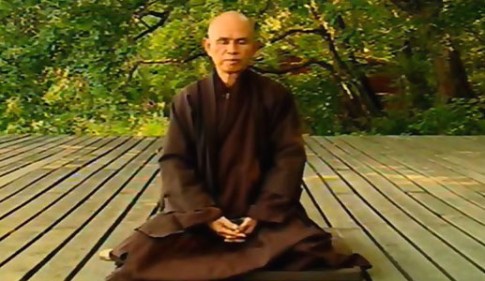
One of the guiding forces behind the scenes of the Paris climate agreement may well have been an 89-year-old Vietnamese Zen Buddhist monk.
Christiana Figueres, who led the climate talks, has credited Thich Nhat Hanh with having played a pivotal role in helping her to develop the strength, wisdom and compassion needed to forge the unprecedented deal backed by 196 countries.
One of the guiding forces behind the scenes of the Paris climate agreement may well have been an 89-year-old Vietnamese Zen Buddhist monk.
Christiana Figueres, who led the climate talks, has credited Thich Nhat Hanh with having played a pivotal role in helping her to develop the strength, wisdom and compassion needed to forge the unprecedented deal backed by 196 countries.
Figueres, the executive secretary of the United Nations Framework Convention on Climate Change, says the teachings of Thay, as he is known to his hundreds of thousands of followers around the world, “literally fell into my lap” when she was going through a deep personal crisis three years ago.
She says the Buddhist philosophy of Thay, who is currently recovering from a serious stroke, helped her to deal with the crisis while also allowing her to maintain her focus on the climate talks.
Figueres said she realized that “I have to have something here, because otherwise I can’t deal with this and do my job, and it was very clear to me that there was no way that I could take a single day off,” she told The Huffington Post this week at the World Economic Forum‘s annual meeting in Davos, Switzerland.
“This has been a six-year marathon with no rest in between,” she said. “I just really needed something to buttress me, and I don’t think that I would have had the inner stamina, the depth of optimism, the depth of commitment, the depth of the inspiration if I had not been accompanied by the teachings of Thich Nhat Hanh.”
So what did Thay teach her?
Figueres illustrates this via a visit she made to his monastery in Waldbrol, Germany, which was once a mental institution with 700 patients, before the Nazis came along to exterminate them and took over the premises for the Hitler Youth.
She says Thay chose to locate his monastery there “because he wanted to prove that it is completely possible to turn pain into love, to turn being a victim into being a victor, to turn hate into love and forgiveness, and he was intent in showing that in this place that had been associated with such absolute, inhuman cruelty.”
“The first thing that he did was he wrote to the Buddhist community and he said, ‘I want hearts. I want hand-sewn hearts, one for each of the patients who were killed here, so that we can begin to transform this building, and this space, and this energy,’” Figueres told HuffPost.
“It was such a powerful story for me, right? Because in many ways, that is the journey that we have been on in the climate negotiations,” she continued. “It is a journey from blaming each other, to actually collaborating. It’s a journey from feeling completely paralyzed, helpless, exposed to the elements, to actually feeling empowered that we can do this.”
“It’s actually been for me internally a beautiful journey of healing. So for me, I’ve sort of been living life at many different levels, because I had to turn my own personal crisis, I had to transform that,” Figueres went on to say. “I’m still in the midst of that, I’m not going to say I’m way over on the other side, but I had to do that for myself.”
“I felt this is exactly the energy that the climate change convention negotiations need, all inspired, you know, by…
Keep reading : Click here




